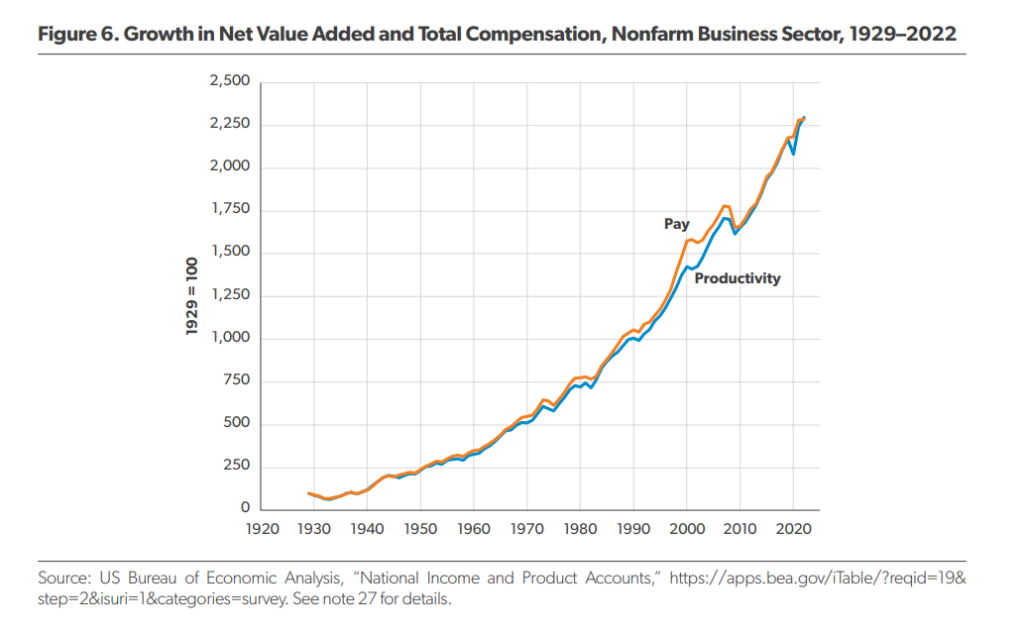The welfare of a country’s population goes well beyond economic statistics, of course. In one classic example from 2006, Kevin Murphy and Robert Topel offered an attempt to meaure in economic terms the gains to the US population from greater life expectancy and disease reduction over time. Of course, this task requires choosing values for what an additional year of life is worth in dollar terms–always a controversial task. But the values are extraordinarily large. They wrote:
We estimate the economic gains from declining mortality in the United States over the twentieth century, and we value the prospective gains that could be obtained from further progress against major diseases. These values are enormous. Gains in life expectancy over the century were worth over $1.2 million per person to the current population. From 1970 to 2000, gains in life expectancy added about $3.2 trillion per year to national wealth, with half of these gains due to progress against heart disease alone. Looking ahead, we estimate that even modest progress against major diseases would be extremely valuable. For example, a permanent 1 percent reduction in mortality from cancer has a present value to current and future generations of Americans of nearly $500 billion, whereas a cure (if one is feasible) would be worth about $50 trillion.
Russia illustrates the opposite situation. It’s health statistics are remarkably poor, suggesting that the overall welfare of Russia’s population is considerably worse than its purely economic statistics would suggest. Nicholas Eberstadt provides the background in “The Russian Paradox: So Much Education, So Little Human Capital” (The American Enterprise, April 8, 2025).
Eberstadt first described Russia’s education and per capita GDP levels in the context of European countries. As the figure shows, Russia’s per capita GDP (horizontal axis) put it near the bottom of the range for European countries, but its education levels (vertical axis) are fairly close to a number of European countries.

But while life expectancies around the world have generally been rising, Russia’s life expectancies have not risen for about a half-century. As a result, Russia ranks with many of the world’s lesser developed countries in life expectancy–in this graph, between Haiti and Benin, well behind Bangladesh, Ethiopia, Rwanda, and others.

How is this possible? One place to start looking for an answer is in the causes of death. This figure shows cardiovascular death rates on the horizontal axis, and “injury” death rates on the vertical axis, where “injury” includes homicide, suicide, poisoning, and “accidents.” The points represent countries of Europe, with the orange point showing the average for all OECD countries (basically, the high-income countries of the world). Russia is clearly the outlier.

I will leave speculating about specific reasons why health in Russia might be so poor to you, gentle reader. I will only note that such miserable health statistics, given the economic and education patterns in Russia, suggest deep level of dysfunctionality and weakness in Russian society.











Leave a Reply